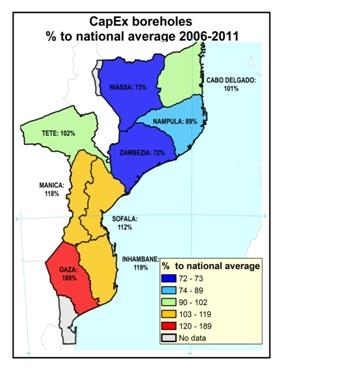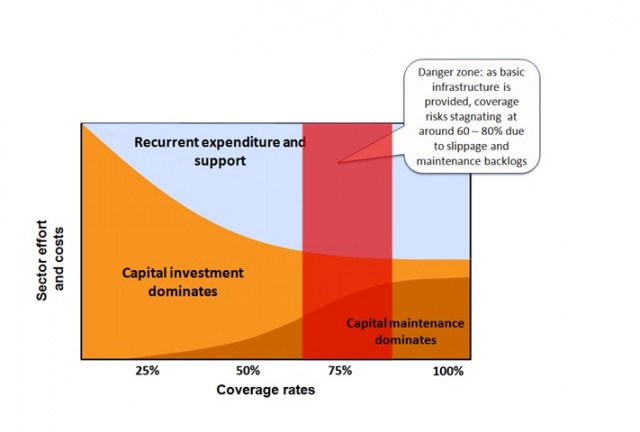The Government of Uganda invited experts from Mozambique, Ghana, and IRC International Water and Sanitation Centre to share their experiences using the life-cycle costs approach (LCCA) to improve sector performance. This approach is raising awareness of the potential for life-cycle costs to achieve adequate, equitable and sustainable WASH services in Africa.
Published on: 23/01/2012
The life-cycle costs approach is used in Mozambique and Ghana to make reliable, readily available, and useful cost information for planning and budgeting. During a one-day meeting held on the 28th of November in Kampala, representatives of the Ministry of Water and Environment (MWE) of Uganda, regional and local government, the private sector, civil society, donors and international NGOs discussed how to adapt these African experiences to the Ugandan context.
In Mozambique, the life-cycle costs approach is used to collect, analyse and budget for capital expenditure (CapEx) of water systems at various administrative levels. Capital expenditure is the capital invested in constructing or purchasing fixed assets such as concrete structures, pumps, pipes and latrines to develop or extend a service. Figure 1 shows the distribution of well and borehole construction costs across Mozambique between 2006 and 2011. This data is used by the Government of Mozambique for the 2012 budget allocations to all rural provinces. Similar data is collected and analysed on capital maintenance costs, which are the costs of asset renewal, replacement and rehabilitation. These costs are quite high. Making data on capital maintenance available has triggered discussions on transparency and the sustainability of WASH services. Mozambique will analyse the variance of these service delivery costs over time and across different regions.

The Government of Mozambique is also considering the implication of three factors on their annual budgets. The three factors are: coverage, population density and access. An analysis by WASHCost Mozambique and the National Water Directorate on the direct support (e.g. by government) to service providers in Mozambique helped to outline costs and how they vary between these three factors.
In Ghana, the life-cycle costs approach is used to gain insights into recurrent costs (per person per year) needed to ensure sustainability of water and sanitation services. Currently, there is strong focus in the Ghanaian water sector on investing in new infrastructure. One major research is the financing insufficiency for major rehabilitation and support to service providers.
The findings on recurrent expenditure are used by the Community Water and Sanitation Agency of Ghana and IRC International Water and Sanitation Centre to investigate innovative long-term financing mechanisms for capital maintenance and to better understand direct support costs in rural areas. The Government of Ghana is using life-cycle costs for a benchmarking exercise for rural and urban areas in the Water Sector Strategic Development Plan (WSSDP) under development by the Ministry of Water Resources, Works and Housing.
The Ugandan water and sanitation sector is looking for measures to improve performance of the sector and ensure better value for money. According to the 2011 Sector Progress Review, access to safe water in rural and urban areas has stagnated around 65-66%. Uganda is at a point where recurrent expenditure is becoming more prominent in order to continue progress on coverage. As shown in Figure 2, sector financing needs change with the level of coverage. In countries where coverage is low, most funds are invested in the construction of new systems to create access to water and sanitation services. As coverage levels increase, funds tend to shift from capital investment to maintenance, and eventually replacement of water and sanitation systems. If this shift in allocation of funds does not occur, coverage risks may regrettably stagnate and systems could potentially fail due to limited funds for recurrent costs.

The Government of Uganda already uses capital expenditure information for planning and plans to increase the proportion of capital maintenance expenditure. Participants of the one day policy meeting generally agreed that the life-cycle costs approach could increase value for money in the Ugandan sector through improved sector planning and budgeting. Participants also emphasised the role that life-cycle costs can play to improve transparency and accountability in the sector.
23-January 2011.
Jeske Verhoeven and Nicolas Dickinson, IRC International Water and Sanitation Centre